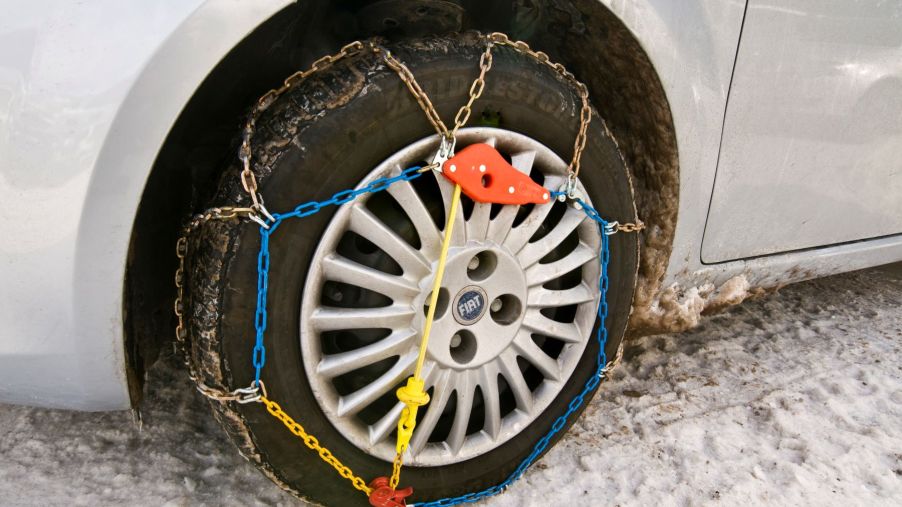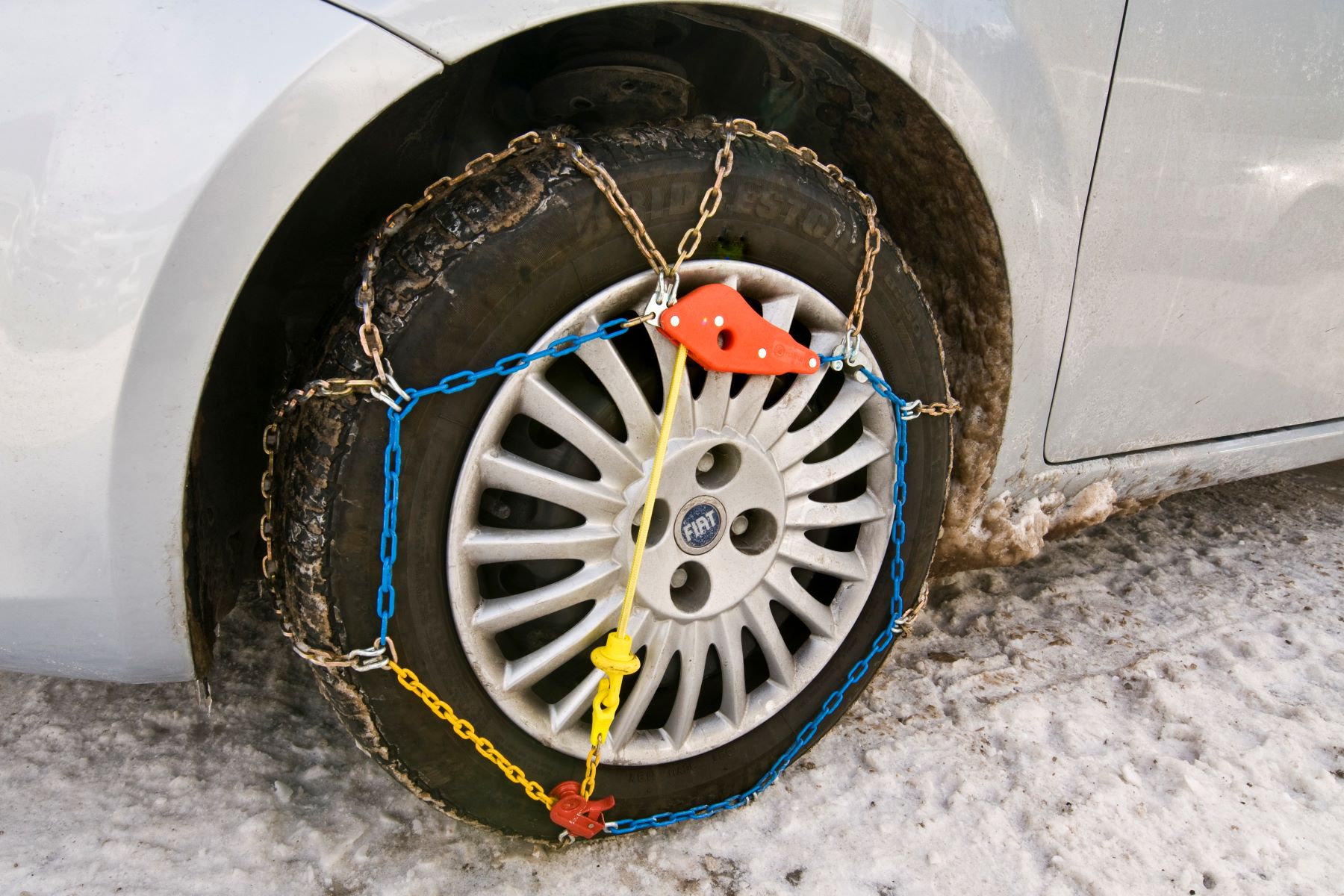
Everything You Need to Know About Tire Chains
Despite having all-terrain tires, there are some weather and road conditions where they just aren’t enough. Adding a tire chain to your vehicle can provide the extra traction and stability you need to get through iced roads. In fact, in some states, it is required by law to use them under certain conditions. So, when should you put on chains, and what laws do you need to be aware of?
When should you use tire chains?

According to The Trucker, the laws surrounding the use of tire chains vary from state to state, but generally speaking, you should only use them when necessary. That means if you’re driving in deep snow, on icy roads, or through mud or other slippery conditions, chains can help improve traction and prevent your vehicle from getting stuck.
Using tire chains contrary to the manufacturer’s recommendation or when not needed can do more harm than good. For example, driving with them on dry pavement can easily damage the roads (leading to costly fines) and damage your tires, suspension, and other vehicle components.
Tire chain laws
Various tire chain laws in different states govern drivers’ use of the automotive accessory. Some states require chains under certain conditions, while others leave it to the driver’s discretion. Below are states with tire chain laws and restrictions:
California (CA)
Colorado (CO)
Connecticut (CT)
Idaho (ID)
Illinois (IL)
Iowa (IA)
Kansas (KS)
Kentucky (KY)
Louisiana (LA)
Maine (ME)
Massachusetts (MA)
Montana (MT)
Nevada (NV)
New Hampshire (NH)
New Jersey (NJ)
New York (NY)
Oregon (OR)
Pennsylvania (PA)
Rhode Island (RI)
South Dakota (SD)
Utah (UT)
Virginia (VA)
Washington (WA)
West Virginia (WV)
Wisconsin (WI)
Wyoming (WY)
In some states like California and Oregon, for instance, there are no specific laws related to tire chains. However, the Highway Patrol will post signs where the use of chains is advised.
Meanwhile, there are no tire chain laws in states like Florida, Hawaii, Vermont, Washington, D.C., Missouri, and New Hampshire.
In some states where tire chains are required, it’s typically only for certain vehicles like trucks, buses, RVs, or cars with trailers. The law may also stipulate that drivers can only use certain chains, so checking with your state’s transportation department before buying and installing them is essential.
The importance of proper installation
While out on open icy roads, tire chains become a requirement to keep yourself and other drivers safe. Most tire chains are made of steel or alloy, which fit over the tire and dig into the ground for traction. The chains will also help to grip the road, which is vital for stopping and turning.
They also help reduce the risk of injury if you skid off the road and hit something. Tire chains can help maintain traction and improve safety when snowfall or ice makes regular tires unsafe.
Precautions and speed limits for driving a car with tire chains
When driving a vehicle tethered with tire chains, it is essential to go slowly to avoid damaging your vehicle or the roads. The speed limit shouldn’t exceed 30 mph, according to Vehicle Freak. High speeds are more likely to cause the chains to come off or break.
Tire chains are ineffective when driving on bare pavements and should be removed immediately to prevent damage. Additionally, they are more likely to slip on bare pavement, so drivers should be careful when breaking and turning.
Always perform a regular inspection to tighten the chains if they become loose. It is also essential to watch for damage, such as cuts or fraying, which can cause the chains to break.
Tire chains can be a lifesaver when used correctly, but it’s essential to know your state’s laws and use them only when necessary. When in doubt, it’s always best to err on the cautious side and put the chains on. After all, it’s better to be safe than sorry when it comes to winter weather.


